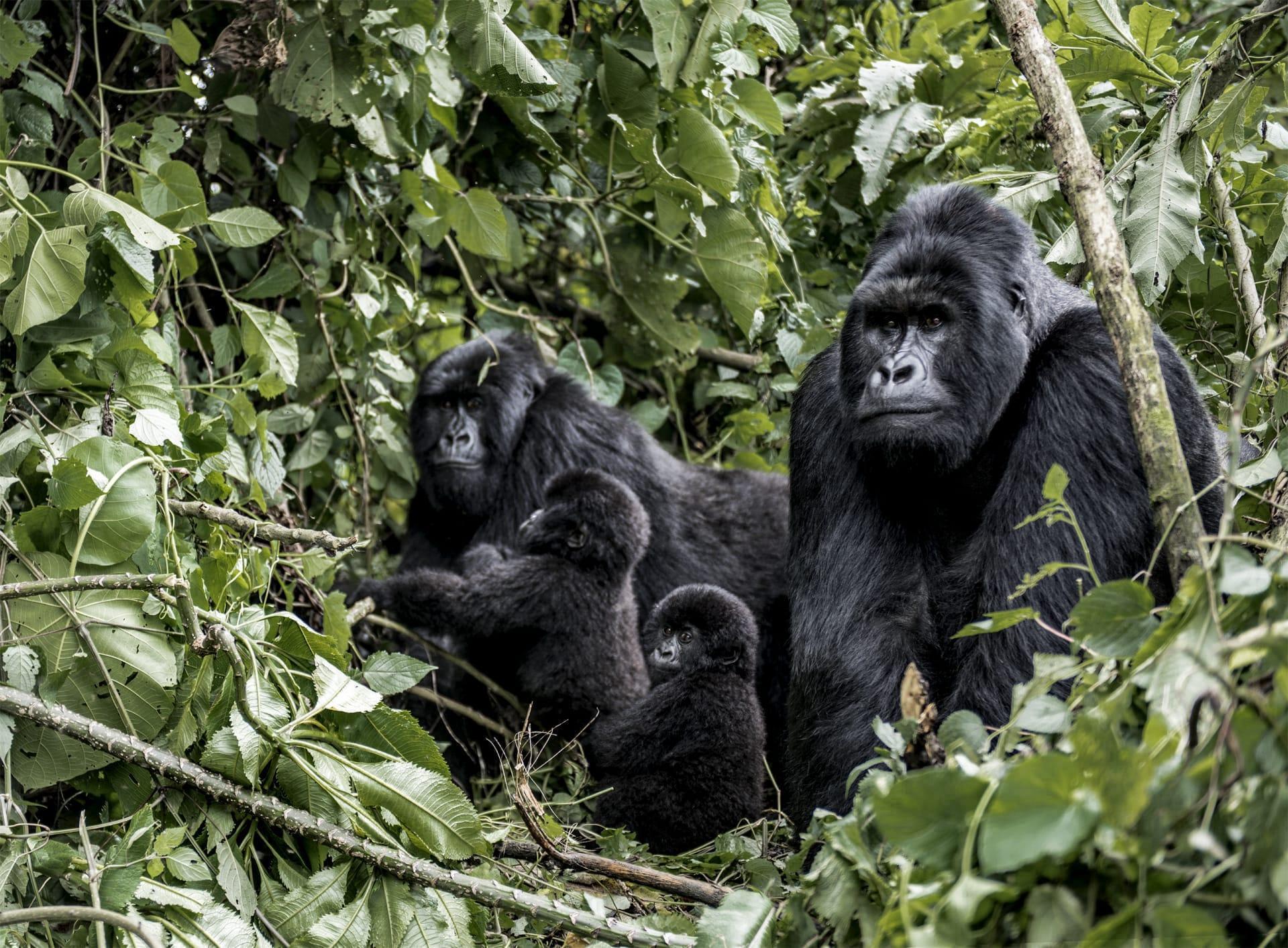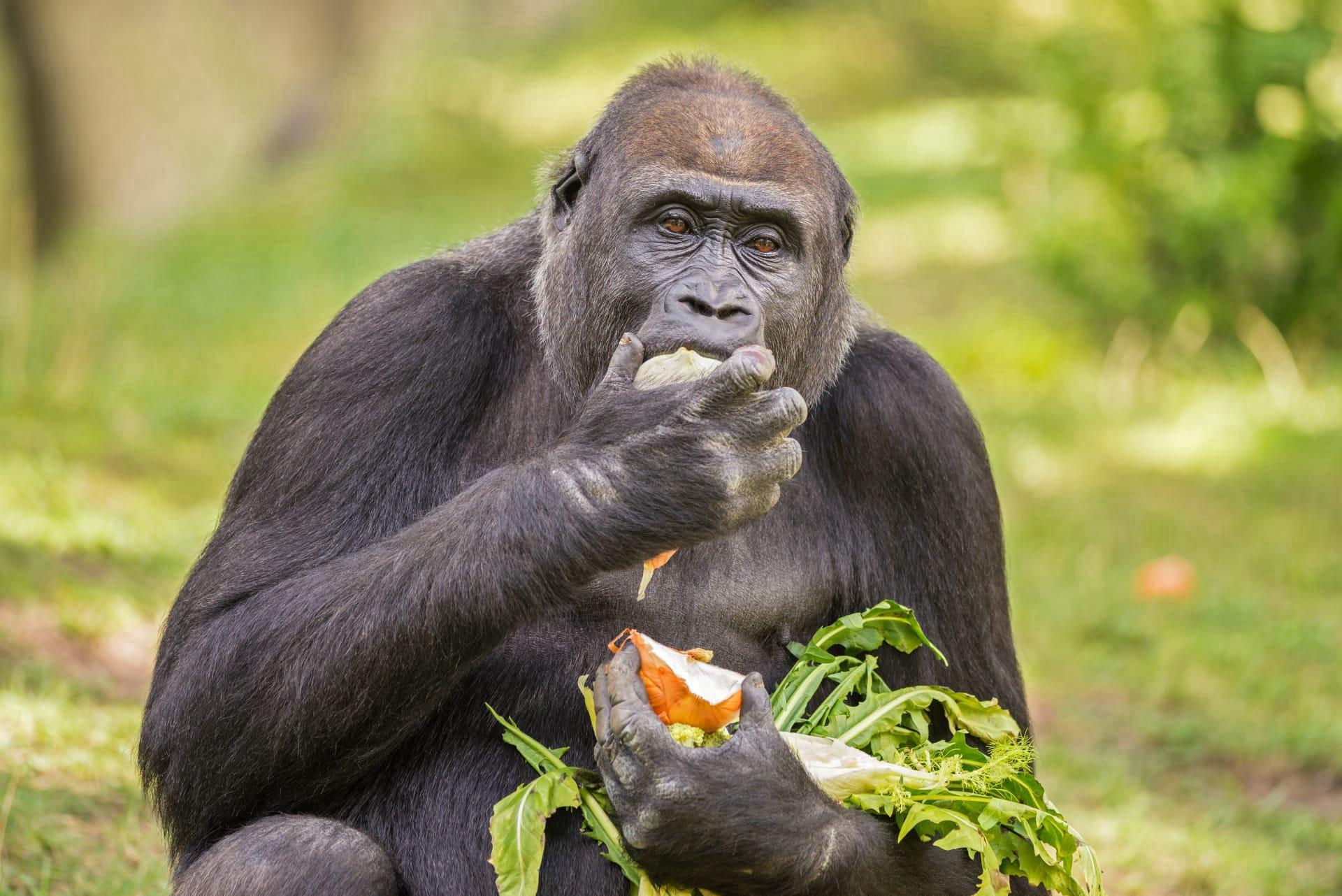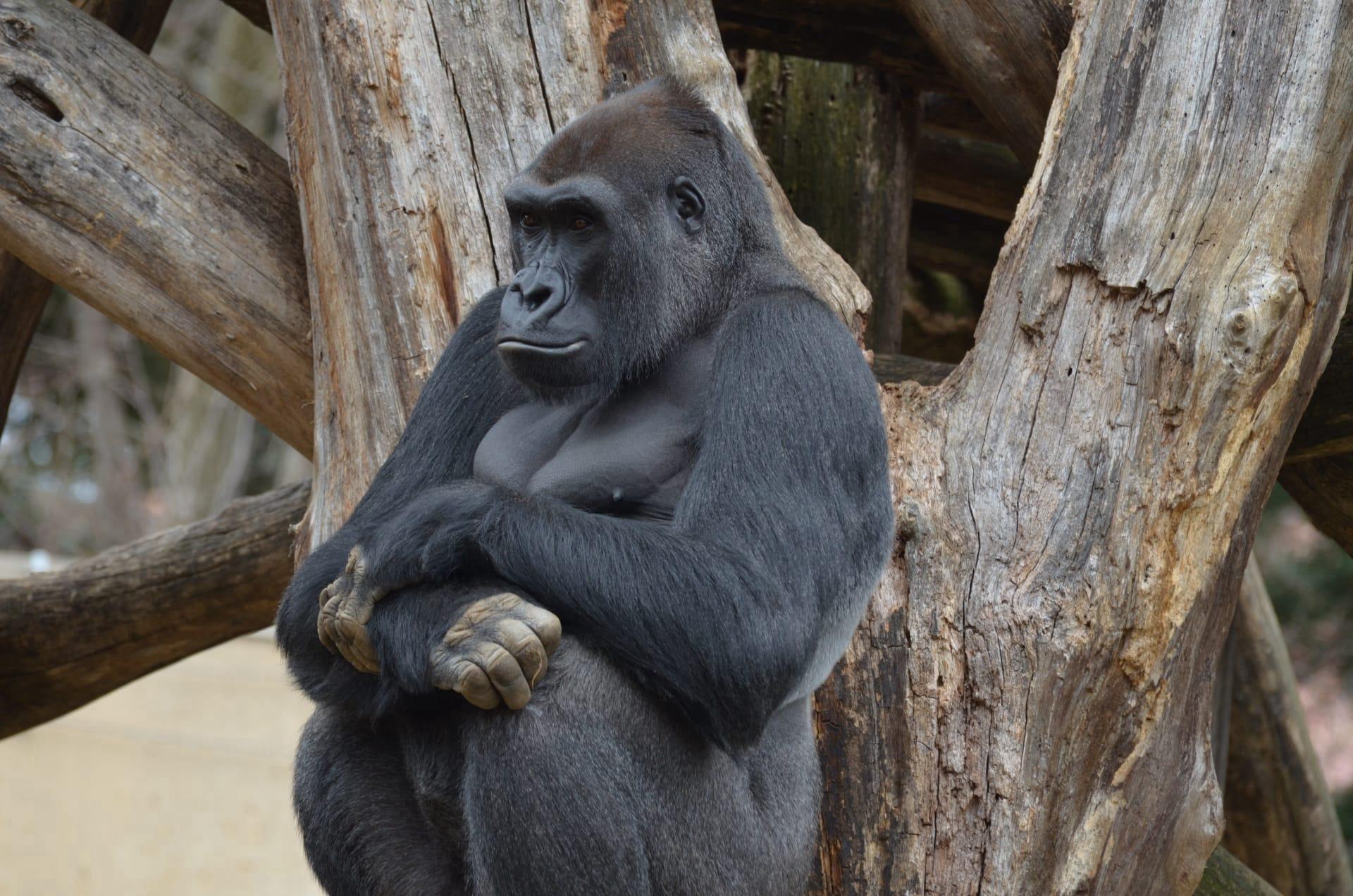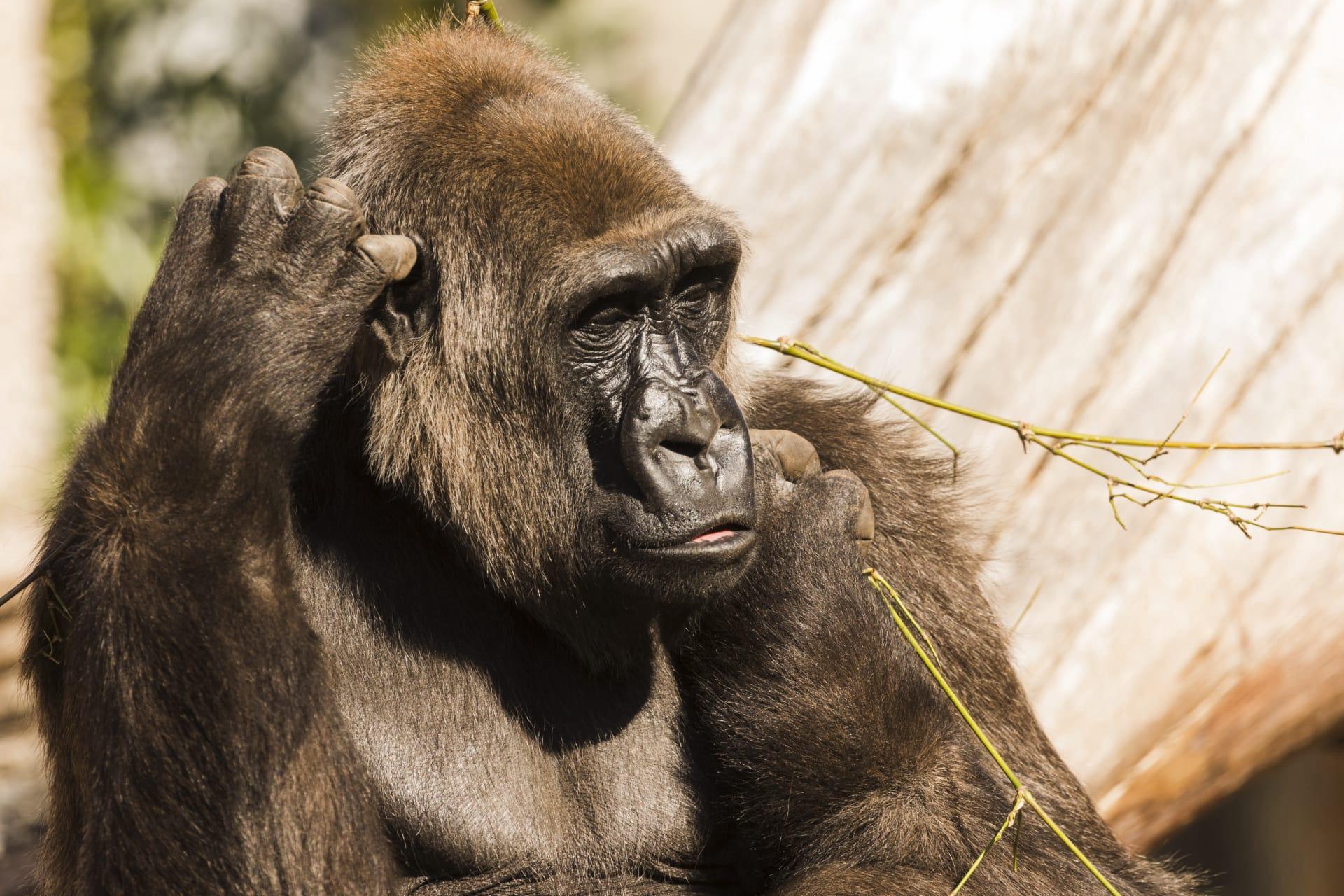1
Gorillas are renowned for their impressive physical strength, often thought to be about six to fifteen times stronger than the average human. This is largely due to their muscular build and the density of their muscle fibers. For example, an adult male gorilla, also known as a silverback, can weigh between 300 to 485 pounds (136 to 220 kilograms) and stands at a height of about 4 feet 7 inches to 5 feet 7 inches (1.4 to 1.7 meters) when on two feet. Despite their bulk, they maintain agility and are capable of reaching speeds up to 25 miles per hour (40 kilometers per hour) in short bursts.
Gorillas have a surprisingly delicate diet, primarily consisting of leaves, shoots, stems, and fruit, which makes up about 86% of their overall diet. This herbivorous diet requires them to consume a massive amount of vegetation daily – approximately 40 pounds (18 kilograms) for an adult male. Their gut is specially adapted for processing plant material, which helps in fermenting the cellulose and extracting necessary nutrients. Interestingly, gorillas rarely drink water as they get most of their hydration from their leafy meals.

2
Communication is a vital part of gorilla social life, and they use a variety of sounds to converse with each other. One of the most notable sounds they make is the "rumble," which can be heard up to 1 mile (1.6 kilometers) away. This low-frequency sound serves several purposes, including signaling their location to other gorillas and expressing contentment. In addition to vocalizations, gorillas also communicate through facial expressions, body postures, and even physical gestures similar to those used by humans.
Gorillas display a remarkable level of intelligence and have been observed using tools in the wild. For instance, they have been seen using sticks to gauge the depth of water while crossing swamps and to retrieve termites from their mounds. This tool use indicates a level of problem-solving ability and understanding of their environment that is quite sophisticated for non-human primates. Gorillas in captivity have also shown the ability to learn sign language, further showcasing their cognitive abilities.

3
Gorillas live in complex social structures led by a dominant male, known as the silverback. The silverback is responsible for the safety and well-being of the group, which can consist of up to 30 members. Despite their intimidating appearance, these leaders rule more through diplomacy than aggression, often intervening in disputes and maintaining order. The silverback also has exclusive mating rights with the females in the group, ensuring his genes are passed on.
In the wild, gorillas have a lifespan of around 35 to 40 years, though they can live longer in captivity, with some reaching over 50 years of age. Their natural aging process is quite similar to humans, including the graying of hair and the slowing down of physical abilities. As gorillas age, they face health issues like heart disease and arthritis, which are common in aging humans as well.

4
Gorillas have a unique fingerprint pattern, just like humans. This means that each gorilla can be individually identified by the unique whorls and ridges on their fingertips. This feature is not only fascinating but also aids researchers and conservationists in monitoring and studying individual gorillas in the wild.
Another intriguing aspect of gorillas is their nesting behavior. Each night, gorillas construct a new nest for sleeping, either on the ground or in trees, depending on the subspecies and their habitat. These nests are made by bending and breaking vegetation and serve as a comfortable place to rest. Nests also provide insights into gorilla behavior for researchers, such as group composition and movement patterns.

5
Gorillas share a significant genetic similarity with humans, with about 98% of their DNA being identical to ours. This close genetic relationship places them, along with chimpanzees, as our closest living relatives in the animal kingdom. This similarity extends beyond genetics to aspects of behavior and social interactions, which are often comparable to human behaviors.
Conservation efforts for gorillas are critical due to their status as endangered species. Threats to their survival include habitat loss, poaching, and diseases like Ebola. Various conservation programs focus on protecting gorilla habitats, anti-poaching patrols, and public education to raise awareness about the importance of preserving these magnificent animals. The success of these conservation efforts is crucial for ensuring the survival of gorillas for future generations.